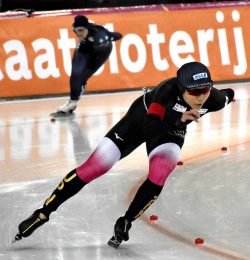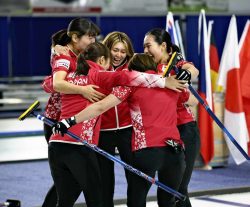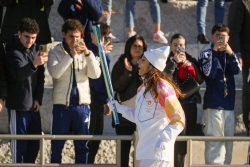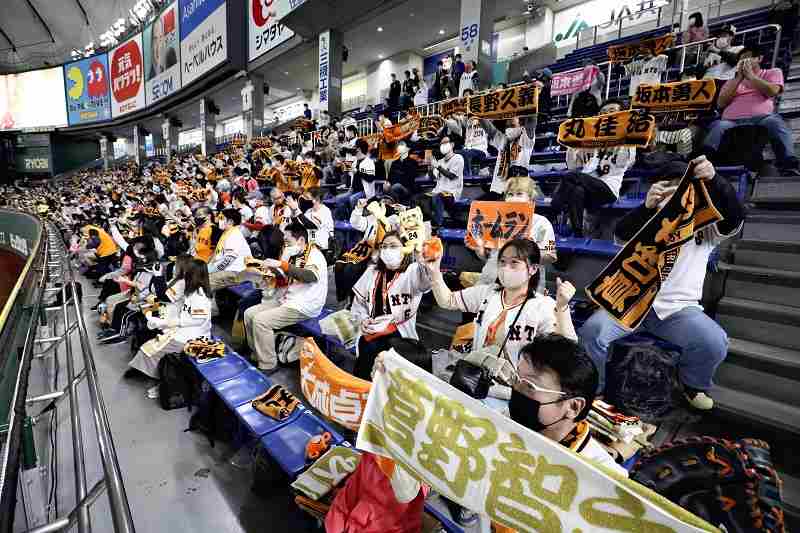
Yomiuri Giants fans wear masks and hold up towels instead of cheering at the opening game of the professional baseball season at Tokyo Dome in Tokyo on March 26.
17:16 JST, June 22, 2021
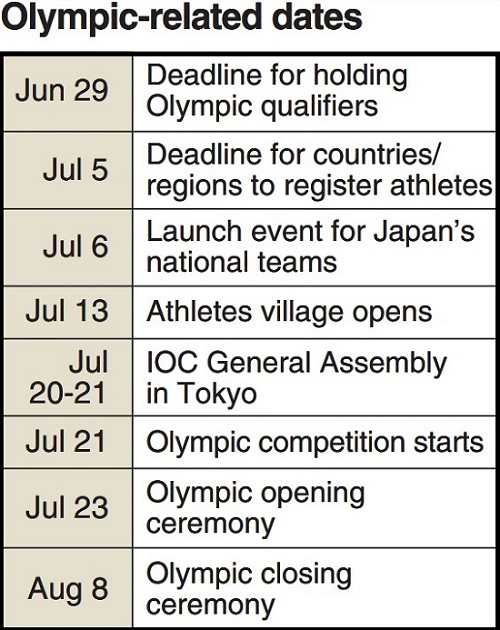
Prolonged discussions over domestic spectators at the Tokyo Olympics finally reached a conclusion, with the government, the Tokyo organizing committee and other organizations announcing on Monday that a maximum of 10,000 spectators or 50% of a venue’s seating capacity — whichever is fewer — would be allowed.
Although spectators might still be banned, depending on the state of infections with the novel coronavirus, organizers decided to allow spectators based on the track record of professional sports events.
“Sports events have been held with spectators at home and abroad, providing firm evidence,” Seiko Hashimoto, president of the Tokyo Organizing Committee of the Olympic and Paralympic Games, said at a press conference after a five-party online conference that included the International Olympic Committee and the Japanese government.
“The upper limit [for spectators] was decided without drawing on the opinions of experts,” a reporter said at the press conference. The journalist was referring to the proposal made by Shigeru Omi, head of the government’s subcommittee on measures against the coronavirus, and others that it was preferable to hold the Games without spectators.
Hashimoto refuted this, saying, “We have also received proposals based on allowing spectators [from Omi and others].”
Initially, the government, the organizing committee and other relevant parties intended to decide on the upper limit for domestic spectators by the end of April. However, the virus spread rapidly in Tokyo and elsewhere due to highly infectious virus variants, and the government was driven to declare a third state of emergency on April 25.
The decision on spectator limits was postponed until the last minute in order to determine whether the state of emergency could end. The state of emergency was ultimately extended twice, and the decision on domestic spectators was postponed accordingly.
Example of pro events
While calls to hold the Games without spectators grew, the Nippon Professional Baseball Organization (NPB) and J.League soccer, which have been holding events with spectators, continued to provide information to the organizing committee.
The number of spectators at many of their events exceeded 10,000 from April through early June, but no infection clusters were reported. This information was reviewed at the June 11 organizing committee meeting to discuss coronavirus measures and became one of the justifications for holding the Olympics with spectators.
The Yomiuri Giants professional baseball team has been working with the National Institute of Advanced Industrial Science and Technology to find ways to have spectators amid the pandemic at the team’s home stadium of Tokyo Dome in Bunkyo Ward, Tokyo.
At Tokyo Dome, areas and times that are likely to be crowded are analyzed in advance, through such means as measuring the concentration of carbon dioxide in the stadium. The situation each day is observed through video footage and in person by staff members, and the information is shared with spectators through an online notification system.
Announcements are also made inside the stadium to ensure orderly, regulated departures and avoid crowding. These efforts were likewise shared with the organizing committee.
Empty venues still possible
The government decided on its policy on June 15.
Prime Minister Yoshihide Suga discussed the number of domestic spectators with Olympic minister Tamayo Marukawa and education minister Koichi Hagiuda at the Prime Minister’s Office. Based on the infection situation in the Tokyo area and the measures taken against infection, they agreed to set the base line of spectators at “a maximum of 10,000,” and began final adjustments.
“Had we mentioned the volume of spectators during the state of emergency, it would have caused a backlash that would have intensified calls for cancellation of the Games,” a senior official of the Cabinet Secretariat said.
In response to the government’s decision, the organizing committee released a draft of guidelines for spectators on Friday. It stressed heightening infection prevention measures by calling for spectators to go home directly from the venues without making extra stops, to arrive at staggered times, and to bring masks.
However, the number of infected people could increase again now that the state of emergency has ended.
“If infections increase again, we have no choice but to drastically reduce the number of spectators,” Suga is said to have told people surrounding him.
"Sports" POPULAR ARTICLE
-
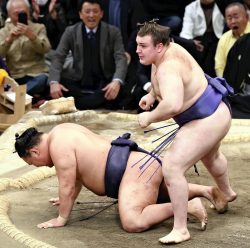
Aonishiki Caps Chaos in Kyushu Grand Sumo Tournament with Playoff Win over Hoshoryu
-

Speed Skater Yukino Yoshida Clinches Ticket to Milan
-

Yoshinobu Yamamoto Cheered by Los Angeles Lakers Fans at NBA Game
-

Kenta Maeda Joins Rakuten Eagles; Returns from American MLB to Japanese Pro Baseball for First Time Since 2015
-

Ukrainian Sumo Wrestler Sekiwake Aonishiki to be Promoted to Ozeki
JN ACCESS RANKING
-

Keidanren Chairman Yoshinobu Tsutsui Visits Kashiwazaki-Kariwa Nuclear Power Plant; Inspects New Emergency Safety System
-

Imports of Rare Earths from China Facing Delays, May Be Caused by Deterioration of Japan-China Relations
-

University of Tokyo Professor Discusses Japanese Economic Security in Interview Ahead of Forum
-

Japan Pulls out of Vietnam Nuclear Project, Complicating Hanoi’s Power Plans
-

Govt Aims to Expand NISA Program Lineup, Abolish Age Restriction


